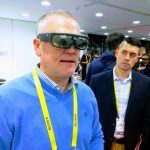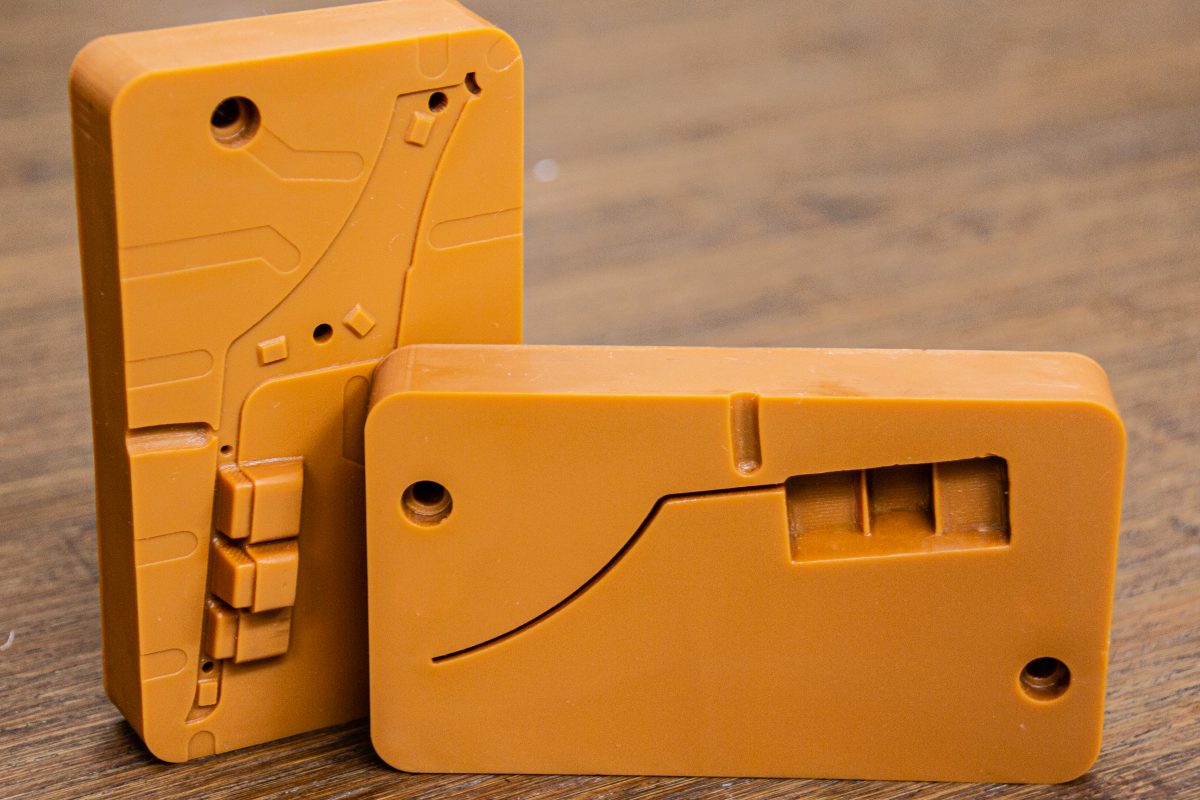Looking for a conference where you can learn more about 3D printing? AMUG would be on almost anyone’s list of recommendations. There’s just one catch though. If your company doesn’t actively own and use additive manufacturing equipment, you can’t attend.
3D Systems started a user group nearly 30 years ago. Over time it morphed, becoming the Additive Manufacturing Users Group (AMUG). As companies began to invest more into 3D printing, they started purchasing equipment from multiple vendors. Even though the technologies were different, many of the learnings around applications and processes were similar enough. It made sense to expand the mission.
I’m guessing that AMUG also recognized the opportunity of a larger base. Even though the conference was run by volunteers, it still benefited from greater size. Costs could be spread among more attendees.
But AMUG by definition was still a users group. They had to draw a line in the sand somewhere. The simplest way to do that was to require that an attendee be a user of additive manufacturing equipment.
What does that mean exactly? I contacted AMUG’s current President, Steve Deak to find out.
According to Mr. Deak, to attend AMUG, a person has to own, or work for a company that owns additive manufacturing equipment. That brought up a whole list of questions, like:
- What types of additive manufacturing technology are included?
- Desktop or just industrial?
- What about people and companies who outsource to fill their needs?
Over 1,000 people will attend AMUG this year. The leadership team reviews every application to confirm they meet the standard. If there’s a question, the prospective attendee is contacted and asked about their equipment. Deak told me that in some cases, AMUG has even contacted the equipment manufacturer to verify what they’d been told. If a person registers online and the information can’t be verified, AMUG cancels their registration and refunds their money.
I asked Mr. Deak, what gates are in place to keep someone from going through all that hassle. He said that the AMUG website informs them when they go to register. Here is what it actually says:
Well, that answers my initial questions. Only owners of the above types of “industrial” equipment who are using it for “professional” applications are invited.
But it’s really not that simple. Could a company that owns a $350 M3D Micro attend AMUG? It’s not an “industrial” machine by any stretch. You could just say no to desktop machine owners in general, but that would be awkward. Formlabs, Rize, and Ultimaker are all current sponsors and are exhibiting at the conference.
What about newer technologies like CLIP and multi-jet fusion? Carbon and HP are also sponsors? Can their owners attend?
Also, what constitutes a professional application?
But here’s an even bigger issue. The companies who make the investment to sponsor and exhibit at AMUG would probably like to see others there as well.
Like who you ask?
PROSPECTS
The 3D printing industry is small but growing quickly. To meet their revenue goals some of the manufacturers will need to sell thousands of expensive machines this year. Not all of those sales will come from existing users.
Back in 2014, PriceWaterhouseCoopers conducted a survey of the top 100 manufacturers. 33% of those hadn’t even begun to implement 3D printing. Much has happened since then, and I’d speculate that if you asked that same group today, the number of non-users would be lower.
But what about the next hundred? Or the next thousand, or the remainder? This 2014 data from the National Association of Manufacturers sheds some light:
- In the U.S. there were a total of 251,901 firms in the manufacturing sector
- 248,152 of those were considered “small” (less than 500 employees)
- 188,926 of the total had fewer than 20 employees
At this point, what percentage of small manufacturers have purchased a 3D printer? Maybe 20%? In 2015, analysis by Fabbaloo suggested that globally, there were less than 300,000 3D printers installed. Manufacturers weren’t the only buyers.
Brands and retailers, medical practices, and plenty of others are considering investments in 3D printing. If you were a manufacturer of 3D printing equipment, would you want those prospective customers excluded?
INVESTORS
This one really puzzles me. I’ve written repeatedly about the “chicken-and-egg” syndrome faced by those in the 3D printing industry. It takes significant investment to scale a hardware business. But it’s difficult to get investment without measurable traction.
That’s complicated by the fact there are so few investors in the space. Of the $20+ billion in venture capital that was raised last year, how much do you think was directed towards additive manufacturing? Once you get past Google’s $100 million investment in Carbon, and the $50 million invested in Desktop Metal, the amount invested by company goes down significantly.
To drive investment, you have to give venture capital firms a reason to believe. Where better to do that than at a user’s conference, where real-world applications are being discussed by real people, using real processes and real technology?
MEDIA
How many product announcements will be made at AMUG this year? According to a recent newsletter, 3D Systems plans to provide attendees with “a first glimpse at transformative 3D production solutions across industries and use cases, from metals to plastics,” and Voxel8, who is a first-time Diamond Sponsor, will “announce the development of a next-generation industrial platform.”
Think they want some press coverage out of those announcements?
I attend many conferences as a member of the media. I try to find unique angles others aren’t writing about. I hope the facilitators, sponsors, and exhibitors at those shows receive some value from what I do. More importantly I hope you, the readers do as well.
I’ve requested a pass for AMUG for two years straight. Both times I was denied. Last year I said fine, I’ll cover something else. This year I asked Mr. Deak for an explanation. He told me that only certain press outlets were invited. They were asked to sign a “Memo of Understanding.” I asked if I could sign one and was told that there were only a certain number available and they were already full.
I pushed, asking which media outlets would be present. The answer? TCT and SME. TCT is a bonafide outlet covering all aspects of 3D printing. The Society of Manufacturing Engineers is an industry association. That’s it. No mainstream press?
I asked why others weren’t invited. When you finally peel back the onion, it’s because they have trade-in-kind relationships. TCT and SME get booth space at AMUG, and AMUG gets booth space at RAPID and other trade show events.
I get that approach for exhibit space, but why should it impact or prohibit other members of the press from attending?
BIG FISH, SMALL POND
I’ve been saying for a long time that 3D printing has an identity problem. Lots of “old timers” want it to remain a cottage industry. They like being big fish in a small pond.
But that’s no longer realistic. Large companies from other sectors are entering the space. Startups are bursting on the scene. Outsiders with valuable skills, from sales and marketing to operations and supply chain, are diving in. Potential customers from many different industries are evaluating the impact 3D printing could have on their business models.
The pond has become a lake.
You can understand why some might resist. Large, well-known companies spend more in R&D than the industry’s current “big players” generate in annual revenue. They operate globally and already have sophisticated sales and service networks. They know how to scale.
Startups are another threat. They’re more agile. This leaves the traditional players stuck in the middle, attacked from both sides.
But the fact is, the industry is changing. If analysts are correct, in less than 5 years the 3D printing market could be 4-5 times bigger than it is today. To achieve that growth the industry will have to keep pace. More vendors, more people, and most importantly, more customers will have to jump in.
The lake will grow to become an ocean.
The industry’s founding companies can deny or resist it, but they won’t stop it. They can also grow with it, but they must recognize that they’ll be smaller fish in bigger waters.
ROCK MEETS HARD PLACE
AMUG has pivoted before. It started as a group specifically for 3D Systems equipment users and expanded to include users of other machines.
To remain relevant and vital to the industry, it’s time AMUG expanded once again. Prospects, investors and members of the media shouldn’t be shunned. They should be welcomed!
I’m sure many of the members of AMUG would disagree. It’s their organization and they can do with it what they want. But they need to keep in mind that they’re between a rock and a hard place.
The future is inevitable. New sellers and buyers will drive growth in the 3D printing market. It’s an unavoidable reality, and a very hard place.
3D printing’s past is a small rock, and in this case the only thing holding it in place is resistance from a group that is threatened by change. Keeping things the way they are is the equivalent of trying to defy gravity. Sooner or later the rock will fall away.
The only question that remains is, will AMUG adapt, or will others innovate in the space where the rock once stood.
Creative Commons Between a Rock and a Hard Place is Copyright © 2007 by Gilles Gonthier









